This easy magic milk science investigation is fantastic fun for kids of all ages. All you need is whole milk, food colouring and a little dish soap to create crazy colour explosions. Older children can use this activity to learn about emulsions.
The reaction that gives the colourful display is between the fat molecules in the milk and dish soap. This is why whole milk is the best to use.
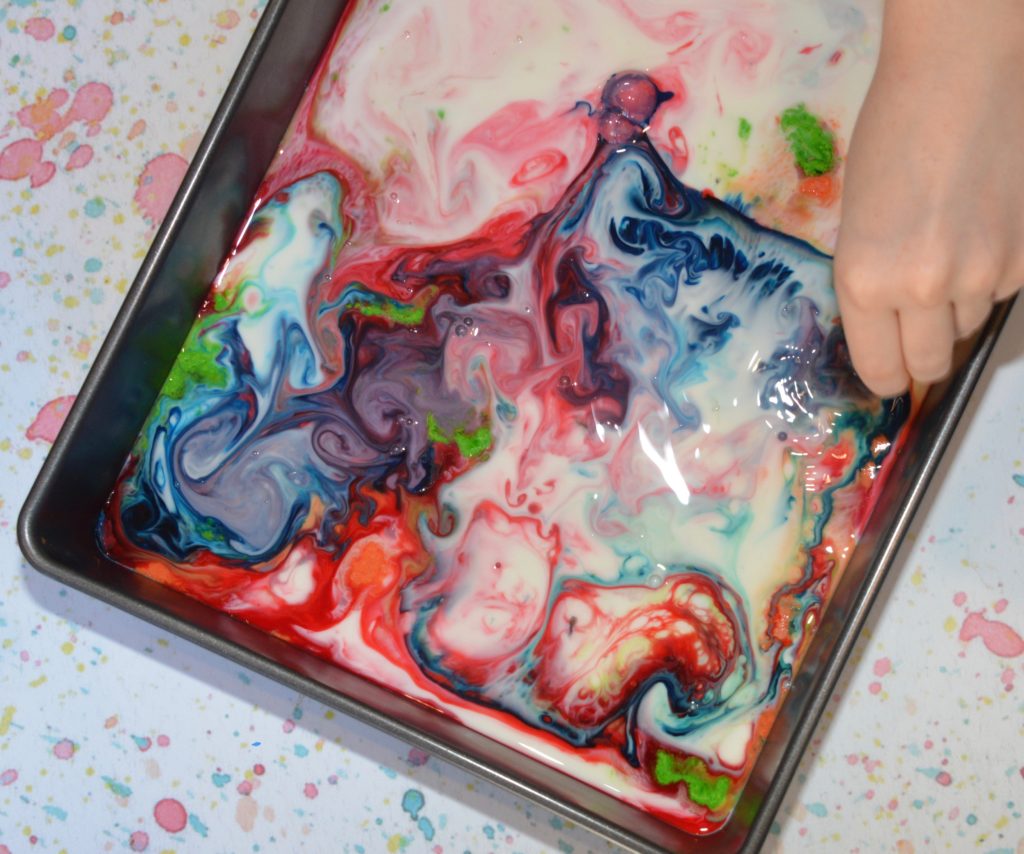
How to set up a magic milk investigation
You’ll need
Whole milk
A shallow tray
Food colouring
Washing up liquid ( dish soap )
Instructions
1. Pour a layer of milk into your baking tray or plate.
2. Gently drip a few drops of food colouring onto the surface of the milk – spread these out.
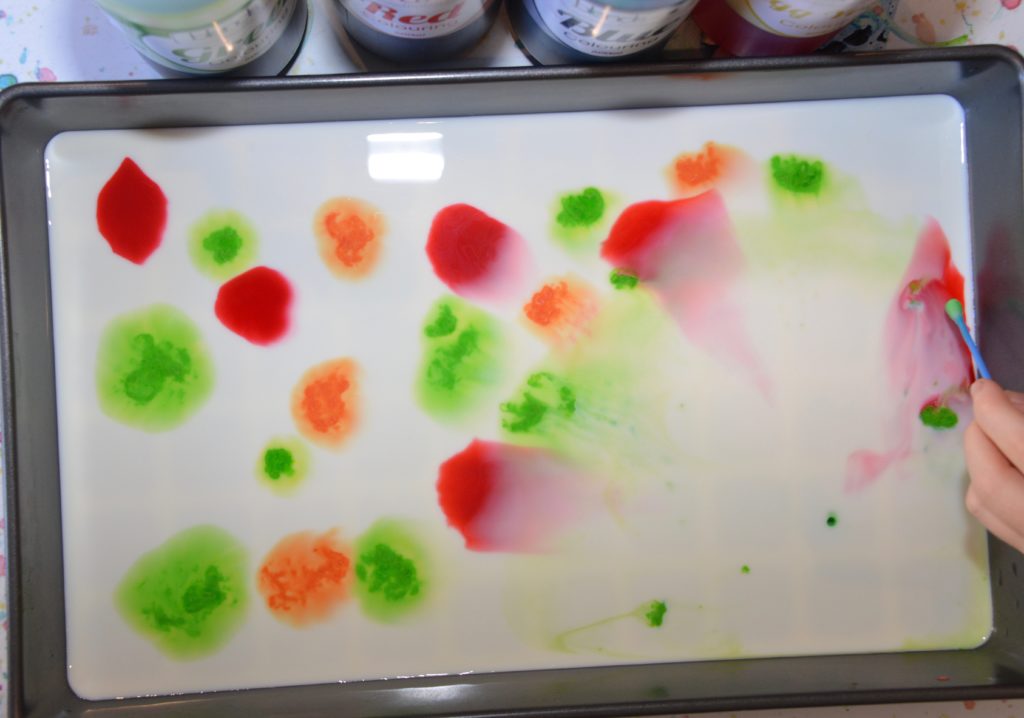
3. Add drops of the washing-up liquid on top of the food dye and watch what happens.
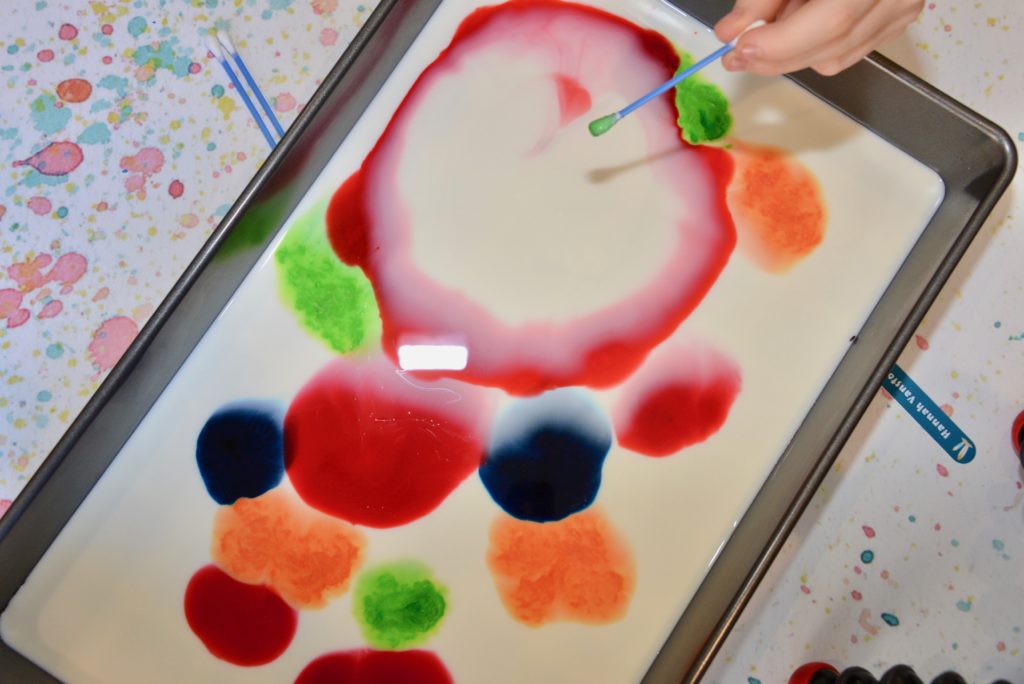
Safety: Do not drink the milk after.
What do you think of our magic milk display?
Why does it work?
Think about why we use dish soap in everyday life. It’s to clean our dishes and break down the fat that makes them greasy. Milk is mainly tiny droplets of animal fat dispersed in water; whole milk has a higher fat content than semi-skimmed, which is why it’s the best one to use. The washing-up liquid/dish soap breaks down the fat in the milk. We call it an emulsifier as it allows the water and fat to mix, creating an emulsion. The emulsifier (dish soap) molecules have a water-loving head and a water-hating tail. The tail sticks into the fat droplet and surrounds it, leaving only the water-loving heads. This allows the fat to mix with the water! While doing that, it scatters the food colouring molecules, giving the colourful display you see.
Properties of emulsions
Emulsions are thicker (more viscous) than oil or water and have many uses thanks to their unique properties.
Examples of emulsions in the kitchen
Salad dressings
Ice Creams
Other examples are paint and some cosmetics.
Immiscible liquids
Immiscible liquids are those that don’t mix to form a solution.
Examples of Immiscible liquids
Vegetable oils do not dissolve in water. We can use this property of oil and water to make a density jar.
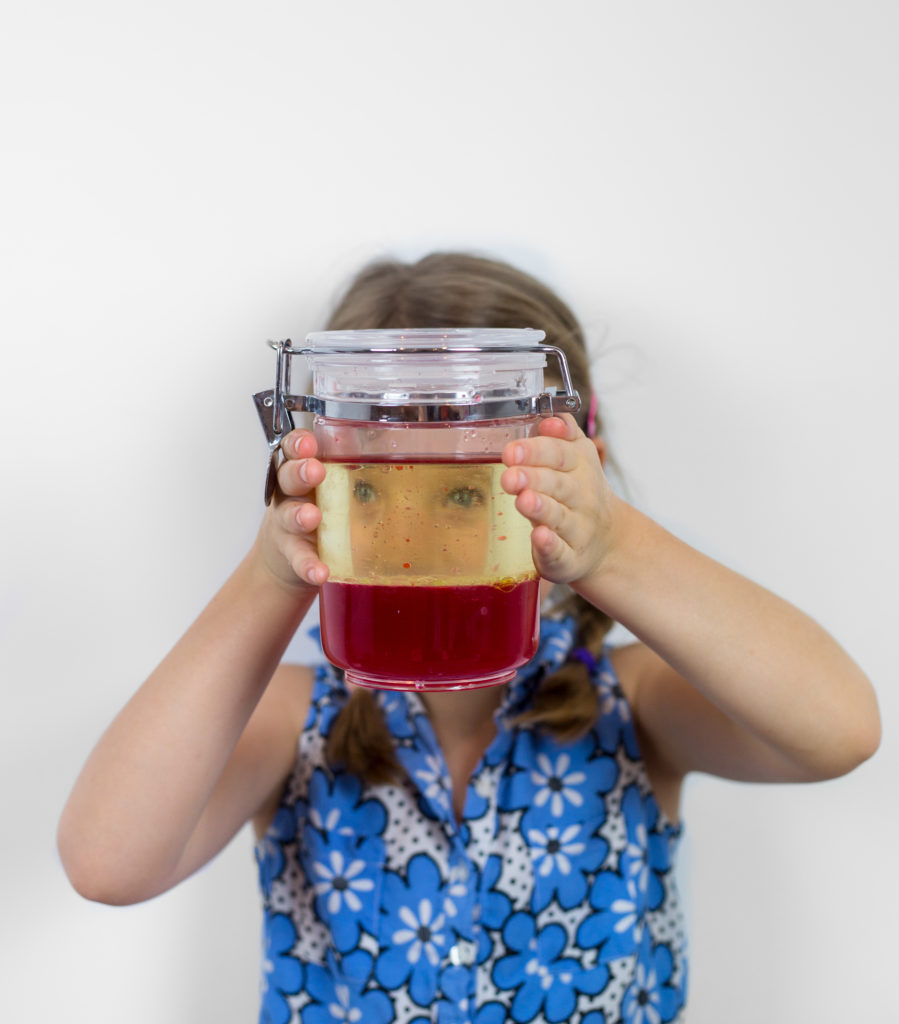
If a mixture of oil and water is shaken and then left to stand, tiny droplets of oil float upwards, and eventually, the two liquids will separate: a layer of oil will form on the surface of the water. However, if an emulsifier is added to the oil and water, a mixture called an emulsion forms, and the oil and water do not separate.
Extension task for magic milk experiment
Try testing different dish soaps to see if they all have the same effect.
Experiment with whole, semi-skimmed and skimmed milk.
Try one of my other exciting chemistry experiments.
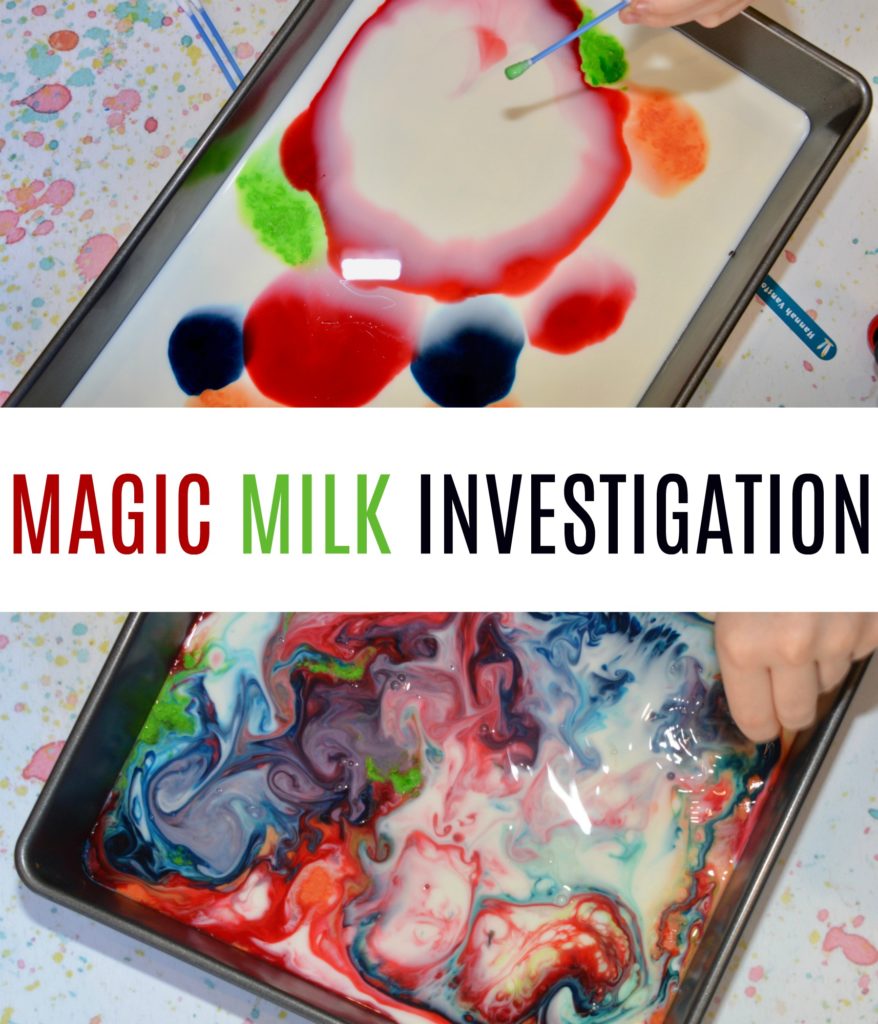
Contains affiliate links
Last Updated on March 14, 2023 by Emma Vanstone

We have done this with whole milk, 2%, fat free, cashew milk and non dairy creamers- they all work. The kids (6-11) like the version with q-tip dabbing soap in. They also experimented with placement of food color droplets.